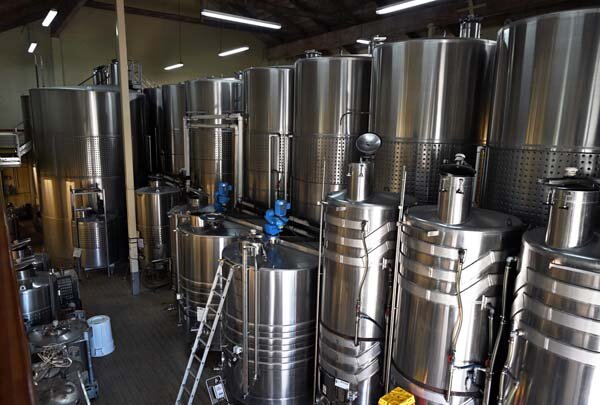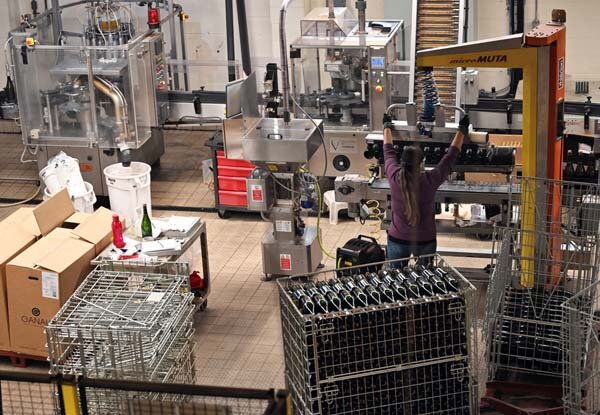An Anderson Valley Pioneer Nears 40: Roederer Estate
The winding Highway 128 that runs through Anderson Valley was known by sportscar enthusiasts before it was known by California wine seekers. As harvest wraps up throughout the Valley and the leaves just begin to change, Roederer Estate’s 2021 harvest is in tank as they push the throttle toward their 40th anniversary next year. Now firmly placed in California’s sparkling wine pantheon, the estate’s wines represent a remarkable and unmatched value in the marketplace.
The storied Champagne house Louis Roederer officially launched their Anderson Valley estate in 1982 just after Champagne houses G.H. Mumm and Moet & Chandon established production in Napa Valley in the 1970s. The year 1982 isn’t exactly ancient history, but there was a pioneering spirit in Louis Roederer’s choice to settle their California outpost where they did. Far more remote than Napa, Anderson Valley’s cool “Deep End” of the AVA feels like a frontier even to this day. The brilliant foresight to pick this place is something that resonates in every bottle that Roederer Estate produces.
Unlike more familiar wine regions, grape growing didn’t gain a real foothold in Anderson Valley until after Prohibition, and it did so slowly. In 1982, any vineyards would have been overwhelmed by orchards and pasture land. With about 2,500 acres now under vine in the AVA, small-scale sheep farms and 19th-century apple orchards still prominently dot the landscape. This character is something that the locals cherish and is inherent to the culture of the place. Napa would have once had a similar atmosphere, but one would have to go back more than a lifetime to witness it like this.
Roederer Estate’s hospitality area sits on one corner of an inconspicuous barn-like structure that is partially dug into the hillside. The bucolic view from their tasting bar gives no clue to the roar of production that takes place behind a single set of doors. From the production of the base wine through to bottle fermentation and finally disgorgement, sparkling wine production requires a lot of work. Each bottle gets a lot of touches over the course of more than three years before it leaves the building. Moving through the facility, there is not one square foot of wasted space. Tanks are packed elbow-to-elbow and fermenting bottles are laid in cages and stacked to the heavens. This facility surrounded by their own vineyards is where the magic happens. It’s a well-choreographed dance to get an impressive volume of production out from this unassuming rooftop.
The non-vintage Brut is the Estate’s flagship wine as a 60/40 blend of Chardonnay and Pinot Noir. It demonstrates remarkable tension and length on a classically savory and creamy profile. While certainly still in brut territory, the wine’s dosage is a measure sweeter than the current trends in Champagne, but the acid is so vibrant and taut that you wouldn’t guess it. This slightly sweeter dosage is necessary for harmony and balance with a base wine that’s nothing short of electric. It spends three years on the lees, but the quality of the wine isn't dependent on extended lees contact for complexity. It resonantly hits the hallmarks of a Champagne-styled wine with citrus and tree fruits, toast, and saline minerality. When the wine is just released, there’s a cool undercurrent offsetting the savor and creaminess that I can only describe as fresh basil and lime zest. A bit of additional ageing has always payed dividends for me with even their entry-level bottling. A few extra years tends to emphasize the toasty flavors as well as add richness and palate weight, especially in magnum format.
In the tasting room, they pour the non-vintage Estate Brut out of both a regular 750ml bottle and a magnum to demonstrate the difference. The practice is memorable and eye-opening for the uninitiated. Champagne connoisseurs know the textural superiority and fine beads that come from a magnum pour. The nature of the estate’s magnum production was my number one question heading into my visit, and I was thrilled to learn that the estate does bottle fermentation in all formats. The magnums are an extra-enjoyable experience, and at no premium to the price.
Roederer Estate’s “l’Ermitage” bottling, the vintage-dated prestige cuvée, is no stranger to accolades in the wine press, and it represents its own qualitative value. L’Ermitage is a sparkling wine of power and breadth that can be treated like a fine still wine at the table more than an aperitif. To express my reverence for this wine, I’ll share that the 2000 vintage of l’Ermitage was the sparkling wine poured at my wedding. Suffice it to say, the bottles I set aside outlived the marriage and are still going strong so I can still “cheers” to that.
Reserve wines for blending in large casks.
Wrapping up my visit with a walk through vineyards to take photos, I found myself wondering if Roederer’s Anderson Valley Estate would be considered small for a large operation or large for a small operation. I suppose it doesn’t matter. The wine is what matters. Writing for UK-based Decanter Magazine in 2018, Wine Bible author Karen MacNeil’s thoughts on the Estate Brut sum it up nicely, “I would happily drink this wine every day if there weren’t so many other wines in the world to taste.”
- Adam Winkel








